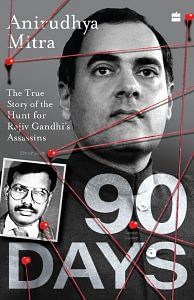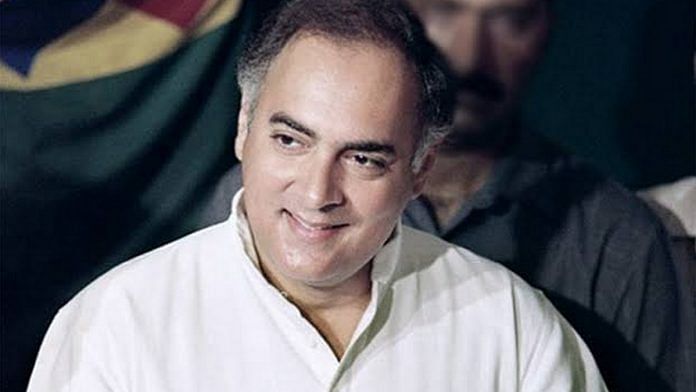A standard practice followed in the interrogation of criminals is asking them the same question over and over again. Besides applying other tactics, the SIT asked the same question to all the assassins and tallied their replies to see if there were discrepancies. Ragothaman was interrogating Robert Payas and Jayakumar probably for the tenth time. He was deliberately asking hypothetical questions. One of them was what would have happened if the assassins had failed to kill Rajiv Gandhi at Sriperumbudur. Neither had any answer to offer. Ragothaman already knew about the LTTE’s plan B to eliminate Rajiv in New Delhi using the human bomb Athirai. Ragothaman wanted to know if Payas and Jayakumar were aware of it. That would have defined their role in the conspiracy to kill the former Indian Prime Minister, besides corroborating the confessions made earlier by Athirai and Kanagasabapathy.
Also Read: ‘Shut up! Damn you! Go to hell’ – Ashok Kumar, the heartthrob who struggled with fame
After a while, both Payas and Jayakumar revealed that the LTTE’s intelligence chief Pottu Amman had a plan B in case his plan in Madras failed. Then the place of strike would be Delhi. Pottu Amman had sent another human bomb—Sonia alias Athirai alias Akila— along with an old man, Kanagasabapathy, posing as her grandfather to the Indian capital. The next step for Ragothaman was to make Athirai and Kanagasabapathy sit face to face with Jayakumar and Payas. With an increase in the number of the subjects, Ragothaman had asked Verma to join in. Eventually, the four confessed to their roles in the grand operation of the assassination of Rajiv Gandhi. Payas and Jayakumar told the SIT what they knew about plan B. Sivarasan had devised a plan to infiltrate a travel agency named M/s President Travel Services in the capital that was run by V. Kalyanasundaram. He was related to a senior Congress politician and a close aide of Rajiv Gandhi.
When Anirudhya heard the name of the Congress politician, he ran a quick check on the travel agency through India Today’s Delhi office. Kalyanasundaram denied any links with Sivarasan or the LTTE, but various media reports indicated that the LTTE had got his contact details from Kalyanasundaram’s uncle, Jagadeesan, a retired army man who ran a rice mill in Thopputhurai.
Also Read: In India, politicians live ‘off’ the people, not ‘for’
When contacted, the Congress politician categorically denied any knowledge that ‘President Travels’ had links with the LTTE and said he had never used the agency for any of his or his
family’s travels. Was the SIT being misled again? Knowing how the LTTE would have used the lead, the SIT questioned Payas and Jayakumar on whether they had used Maragatham Chandrasekar, the Congress candidate from Sriperumbudur, to get Dhanu close to Rajiv? There were reports of Latha Kannan and Kokila, who were seen flanking Dhanu in Haribabu’s picture, getting their VIP passes to greet Rajiv through Chandrasekar’s daughter Latha Priya Kumar, also a Congress worker. However, with both Kokila and Latha dead, the reports could not be verified. Both Payas and Jayakumar claimed they knew nothing. It would have suited them to implicate a Congress politician, that, too, someone as close as Maragatham Chandrasekar to Rajiv. But they refrained. The duo was sent back to their cell even as the interrogation of Athirai and Kanagasabapathy continued.
According to unconfirmed reports, Sonia, alias Athirai, was chosen because she had a fair complexion, which they thought would allow her to mix better with the Delhi crowd. Pottu Amman told her that Kanagasabapathy would be accompanying her to the Indian capital and arrange for her stay at a place where a few more LTTE cadres would also take shelter. Their task would be to collect information about the movements of certain VIPs in the capital. Athirai would be informed when the time was right to strike. Athirai did not admit that the target was Rajiv Gandhi at that stage of her interrogation. The place Kanagasabapathy chose was:
[A two-room] Central-government quarter, illegally rented out by its government servant, had made it the perfect cover. It was located in a sprawl of single-storey government accommodation in north Moti Bagh in south Delhi. It was just eight kilometres away from Rajiv Gandhi’s 10 Janpath residence. Kanagasabapathy had paid Rs 5000 as advance to
the broker, claiming his granddaughter would come and stay there very soon to study Hindi and computers.
Also Read: If India and China were friends, Asia would be more developed. But they are not
Jayakumar was brought back into the interrogation with Athirai and Kanagasabapathy. He confirmed that while Sivarasan was confident of accomplishing the task of killing Rajiv Gandhi in Tamil Nadu, his immediate boss Pottu Amman preferred the Indian capital. ‘Why don’t we try Delhi?’ Pottu Amman had asked in a coded message in March 1991. ‘I am confident that I can do it here [in Tamil Nadu],’ Sivarasan had replied in a coded message. Pottu Amman had insisted he continue with Delhi as the backup plan. The Delhi plot was, naturally, abandoned after the LTTE’s success in Sriperumbudur.
Sivarasan’s stories had made him an almost cult figure in the eyes of the investigators. He was proving to be too smart for the sleuths. The best and worst part was that the more the interrogators heard about the one-eyed mastermind, the more mesmerized they got.
Jayakumar further claimed that Sivarasan, not getting any help from Jaffna despite repeated calls for a boat, sent Athirai and Kanagasabapathy off to Delhi to escape through Nepal. If that would have been a success, he, too, would take the same route out
of the country. Thyagarajan was all set for that.
Verma asked Kanth to join the interrogation at that point, since it was he who had arrested Kanagasabapathy and Athirai from a hotel in Paharganj in Delhi. Earlier, Payas had confessed to Kanth that Kanagasabapathy and Athirai had made two trips to Delhi—first, to assassinate Rajiv Gandhi in case their plan in Madras failed, and second, when they were trying to figure out an escape route via Nepal.
Parallel to these revelations, Radhavinod Raju was studying the diary of Sivarasan found in the kitchen hole of his Kodungaiyur hideout. At first, the tiny pages, with Tamil and English notes scrawled all over in Sivarasan’s handwriting, hadn’t thrown much light on events. It appeared to be a mix of telephone numbers, addresses, contact persons, aliases, code names and payments. Instead, the two pocket diaries were turning out to be the key to unlocking the conspiracy.
 This excerpt from ‘Ninety Days: The True Story of the Hunt for Rajiv Gandhi’s Assassins’ by Anirudhya Mitra has been published with permission from HarperCollins India.
This excerpt from ‘Ninety Days: The True Story of the Hunt for Rajiv Gandhi’s Assassins’ by Anirudhya Mitra has been published with permission from HarperCollins India.



